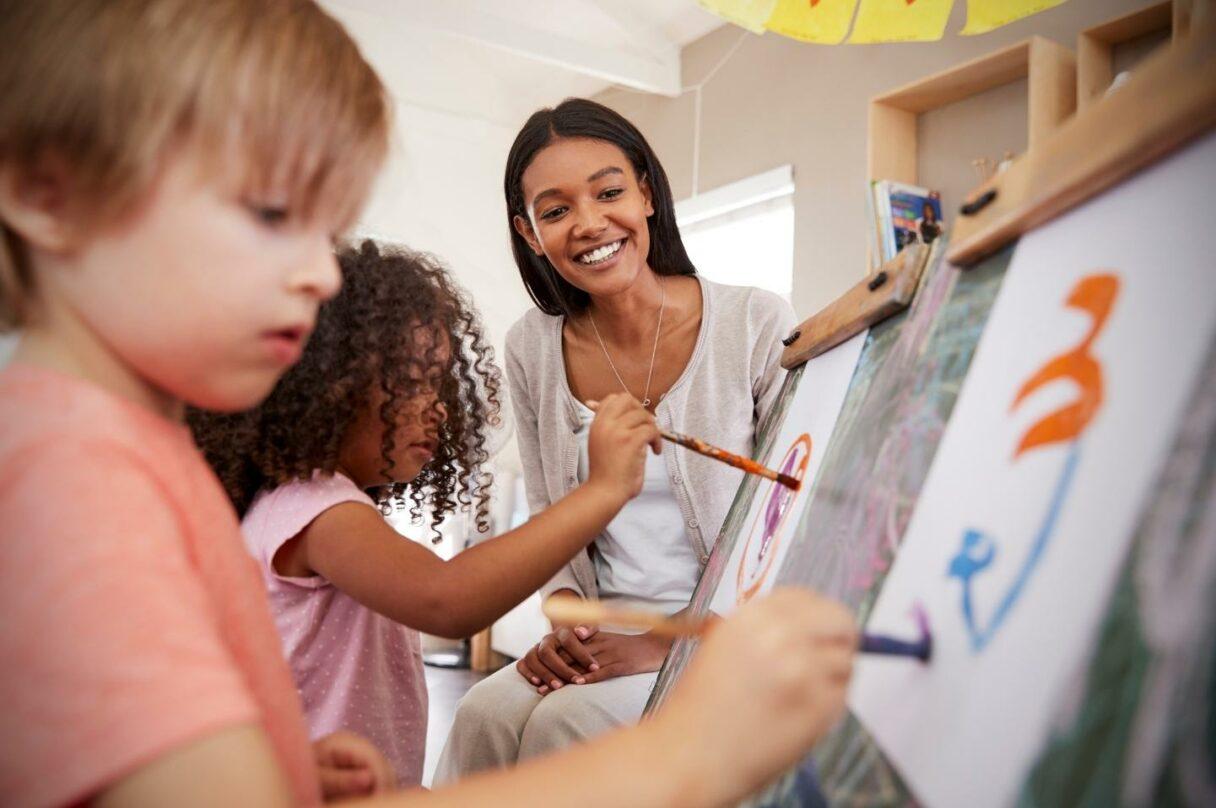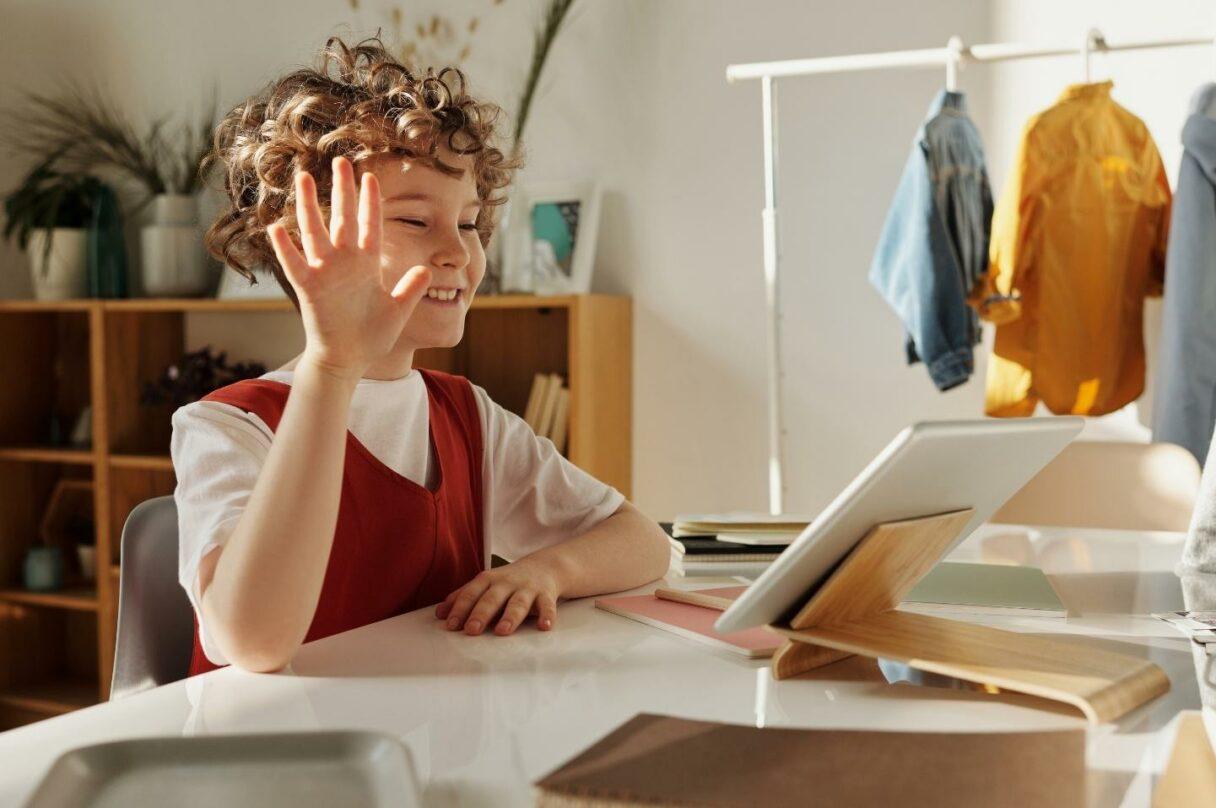What does student-centered learning mean?
The main principle of student-centered learning is to give students control over both the content of the lesson and the learning method, which results in a shift of focus from teachers to learners.
But although this model has lately been gaining momentum, it isn’t dominating just yet. On the contrary, the traditional instructional method, teacher-centered learning, is still adopted by the striking majority of today’s educators.
As the name suggests, this old methodology puts the teacher at the center of the learning process. This means that they become the most active and intellectually involved person in the classroom, while students act as passive recipients of information and rarely take ownership of their learning, which hinders both their motivation and personal development.
Student-centered instruction, on the other hand, promotes autonomy and active learning, therefore drastically altering the role of students in such a way that they become the leaders of their learning process.
Hence, it comes as no surprise that in recent years, more and more teachers have started implementing student-centered activities in their lessons.
The benefits of a student-centered approach

Improved attitude and engagement
First, as obvious as it sounds, students are also human beings, therefore, they perpetuate certain common behaviors, some of which are exploited by the student-centered learning method.
For instance, we tend to become more engaged when we feel in control; and in the same way, when a learner is put at the center of the lesson, their attitude towards learning improves substantially, as their learning process is shaped almost entirely by themselves.
Moreover, learner-centered classes are highly customizable, which means that the decision on the topic of the lesson is ultimately in the hands of students. This feeling of power can be the ignition of a strong enthusiasm for learning that assures long-lasting retention of knowledge and improves academic performance.
Essential life skills
Not only does student-centered instruction have a positive influence on grades, but it also plays an important part in the personal development of learners. In fact, thanks to this teaching method, students can develop pivotal life skills that they will later be able to use both in their personal and professional life.
To start, they gain essential cooperation skills, as student-centered learning prioritizes group work over standard lecture-style lessons. This skill can be critical in the eyes of an employer: good teamwork is nowadays seen as one of the pillars of a successful firm.
Not to mention, collaboration allows for the development of excellent communication skills. This is due to the fact that working in a team, students are compelled to communicate in order to complete a task, as the decision on the pace and evolution of the project is completely in their hands.
Moreover, learner-centered education is not only about knowing how to work in a group. In fact, students also learn to accurately identify when a task calls for autonomous work, which helps them develop a natural ability to think and work independently.
On top of this, some pupils manage to advance their leadership skills, as they are given the opportunity to direct group research and projects, thus also gaining confidence and self-esteem.
And as for personal life, learners improve their networking skills and learn to build strong and long-lasting relationships, just like they do with their classmates and teachers.
How to create a student-centered environment

Having defined and explored the benefits of student-centered learning, it is time to examine some useful strategies for the implementation of the method in the classroom.
First of all, students should be encouraged to develop an understanding of the value of the subject matter at the beginning or prior to the lesson in order for them to start shaping their learning process.
Thereupon, it is pivotal for instructors to start observing and inquiring into the learning needs of their students. To this end, it is advised to conduct a brief needs analysis in the form of a questionnaire, ideally anonymous, in which pupils have the chance to express their goals and expectations.
This step is also useful in rapport-building, as it allows instructors to start getting to know their students’ character.
The outcome of the needs analysis should become the backbone of the course: students are more likely to feel included in the lesson if they are somehow in control of its content and objectives.
However, in order to achieve these results, it is vital not to focus on the singular topics that the students name. Instead, a good strategy is to come up with broad topics, as they can be narrowed down later on by the pupils themselves.
Student-centered education is also all about making the learners acquire new knowledge however they want. To this purpose, it is necessary for teachers to instruct the course participants about different learning methods and styles, hence navigating them towards choosing the strategy that suits them best.
Nevertheless, this step can be tricky, as the lesson could potentially transform into chaos. It is advised to give the students 2-3 strategy options, or negotiate the learning method after they have made a preliminary decision.
Throughout the lesson, or succession of lessons, instructors ought to closely monitor the development of the group work in order to prevent its derailment.
Last but not least, it is important to consider the use of physical space.
Are the students going to be sitting in a big circle in the middle of the classroom? Is it, perhaps, better to gather them around smaller tables?
There is no wrong answer here. The set up of the classroom should be chosen based on the students’ learning styles, as well as on the type of activity that they are going to be carrying out.
The key to succeeding in the creation of a student-centered lesson is creativity: do everything that you can to make your students the leaders of their learning, but stay mindful of their limitations, and occasionally give them a little push in the right direction with as little interference as possible.
Examples of student-centered learning strategies

1) Flipped classroom
The flipped classroom method is a very efficient way to create a student-centered environment, as its objective is to make pupils elaborate on themes explored before the class.
In brief, teachers can introduce a topic prior to the lesson, for instance with the aid of reading or audiovisual materials. Then, in class, they can proceed to brainstorm the main takeaways of the material and split students into groups.
Afterward, it is all in the hands of students.
Do they want to keep discussing the main points of the reading or visual? Do they want to do research on one of the key points of the lesson? Or maybe they feel confident enough to create an original piece on the topic, such as a video?
The opportunities are virtually endless.
If you wish to be inspired by other good practice examples and lesson plans employing this innovative method, check out our next Flipped Classroom courses to bring your expertise to a new level.
2) Project-Based Learning (PBL)
PBL can be considered a growing trend among educators. Besides being extremely collaborative, this method allows students to participate in hands-on activities that they can shape themselves, therefore becoming the protagonists of the lesson.
All that there is to do is give the pupils a broad, open-ended question, which they can narrow down and create unique projects.
It is important to involve the students both intellectually and physically: they can work on a poster, a fashion show, a model, you name it; and the dirtier their hands get, the better!
3) Jigsaw

Jigsaw consists of breaking a topic up into several parts and dividing students into so-called “home groups” of 4 to 5. Each student is then tasked with researching a different part of the topic, starting by reading the assigned material alone. Next, the students who were working on the same material join in “expert groups” to compare what they learned, and to select the information that they want to share with their homegroup. In the end, the original groups reconvene to discuss the elaborated topics.
This is an extremely efficient way to boost student-student interaction, both face-to-face and online, mainly because the students are pushed to work within two teams during one activity, but also due to the fact that working and discussing together, teammates can build rapport.
The students are also offered the opportunity to gain confidence by being given remarkable control over the activity they’re carrying out.
In fact, having the chance to actively decide what they are going to share with their teammates, the students often feel a sense of responsibility, empowerment, and motivation to do their best.
4) Use ICT tools
When exploring a theme on their own, students need the activity to have character. This can be achieved by making it multi-layered with the use of technology.
ICT tools are extremely appealing to young learners; thus, they boost motivation and engagement, and make the whole learning process a lot smoother. Among others, Padlet and Trello are noteworthy applications, as they are easy and straightforward; they can, therefore, be used by students of all ages.
If you would like to know more, take a quick look at our ICT courses, such as ICT as a Tool for a Student-Centered Classroom.
Student-centered learning online

After the sharp turn that the world took back in 2020, part of what once was traditional, face-to-face education will from now on always belong online. Nevertheless, as long as we make good use of virtual space, there’s nothing to be disappointed about.
But wait, isn’t student-centered education all about teamwork and cooperation? How can that happen online?
Breakout rooms!
Modern-day software allows educators to split the class into smaller groups while still maintaining all the functionalities of the “main room”.
In breakout rooms, students can discuss and debate just like in class, while also showing each other presentations and other materials by sharing their screens. And once conversation topics in groups have been exhausted, the pupils can exhibit their findings to the rest of the class, again, as if they were in a physical classroom.
Throughout the activity, the teacher can migrate between rooms to assure full engagement and to give additional tasks.
Monitoring online can be tricky, but with a little bit of focus, everything is possible.
Conclusion
The revolution that is student-centered instruction can be scary. After all, just like students, teachers also like to feel in control of the lesson, making sure that everything is buttoned up to the last button.
But this method really allows pupils to spread their wings, as they are given the opportunity to fully engage in the learning process thanks to having close to no limitations.
With the learning needs of the students at heart, teachers should adapt by allowing their learners to flourish in this society that urges us to engage future citizens in real-life situations and contexts, rather than presenting them with a universal perspective.
So, have fun, get creative, and enjoy watching your students thrive!


A very good info to teach preservice school lecturers
School administration require silence in classrooms.
56 students in one class!
Always preparing for exams.
And then students are addicted to their telephones.
Creio que estamos caminhando para a escola do século XXI, trabalha que já está sendo feito há algum tempo pelos professores empenhados. Todo o contexto em que vivemos a nível mundial, faz-nos pensar e mudar a forma como ensinamos: em parceria com os nossos colegas e em interação com os nossos alunos. A aprendizagem tem que resultar em saber fazer, experienciando e não apenas ouvindo.